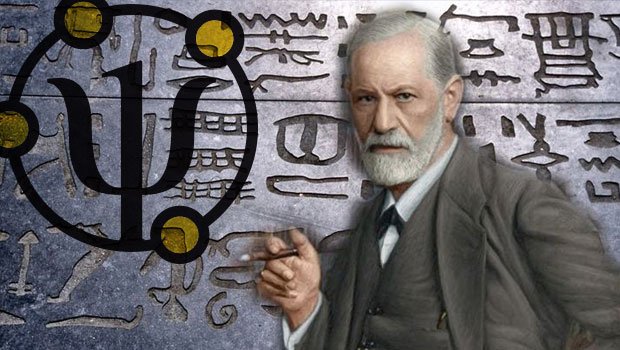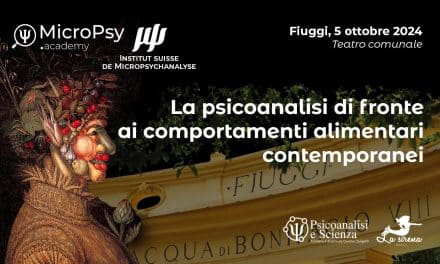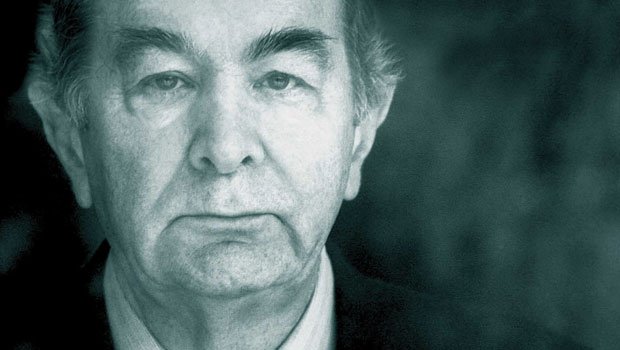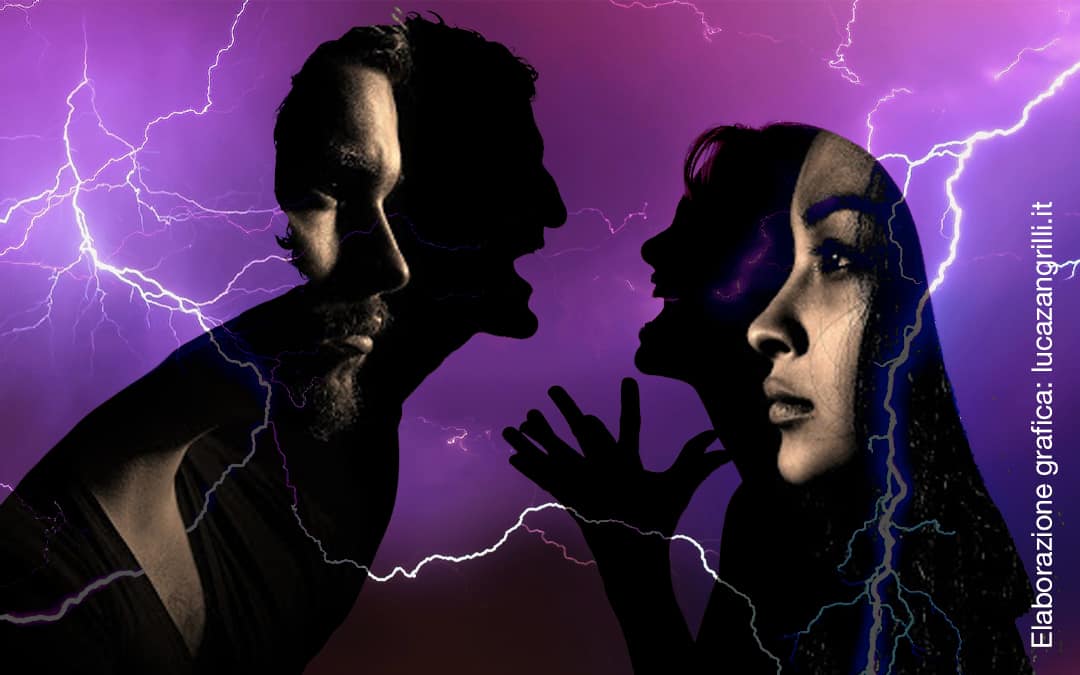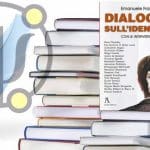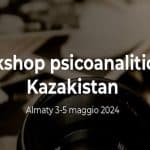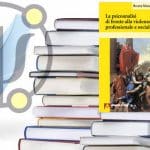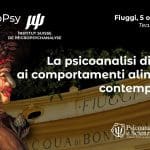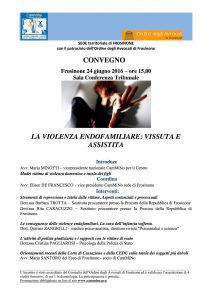
As always, it will be useful to refer to the etymology of the word. The word “trauma” comes from the Greek “τραῦμα” (perforation) meaning “passing beyond”.
This word strongly indicates the action of crossing a barrier, a border and of disintegrating a structure.
The psychic trauma is fundamentally subjective (in other words the same event has dramatically diverse consequences depending on the maturation of the psychic apparatus of the subject who undergoes it and on the constitution of his psychobiological ground) and it is classically described as an event that floods the mind with an hyper-afflux of stimulus that cannot be managed and which disintegrates in a permanent manner the following capability of response to the stimuli, deforming it.
To get a common idea we can all think of those situations of enormous fright we have experienced that leave us paralysed: the behavioural paralysis is due to the generally transitory incapability of our mind being able to manage the overflowing intensity of the perceptive stimulus.
As Manuela Tartari underlines in a very important trilogy dedicated to Trauma, beyond the differences of interpretation all psychoanalysts observe how the traumatised patients are unable to remember or call to mind the associative nuclei (representations and affects) connected to the trauma. We speak about non representable or better still non thinkable experiences.
Freud reminds us with his absolute and shocking clarity: “Every impression whose resolution through associative mental work or motor reaction, presents difficulty to the nervous system becomes a psychic trauma” (On The Psychical Mechanism Of Hysterical Phenomena, 1893)
To get an idea about how much the adult/child interaction can drastically influence the psychic development of the human being I would like to refer to some notes that I presented in a recent work of mine.
“…Does a parent have any power? Apart from the enormous imbalance of the physical strengths involved, here we are speaking about the human psychism and we can say without any difficulty: Yes he does!
A parent can make a human being go crazy. It is sufficient to look at the studies of Gregory Bateson on the ‘double bind’, believed to be one of the various causes of the schizophrenia.
As we all know the so-called ‘double bind’ is a situation in which the communication between two individuals who are connected by a close and important emotional relationship, presents an unresolvable conflict between the level of explicit verbal speech and the non-verbal meta-communicative level (the tone of voice, the facial expression, the modulation of the gaze, the gesture, the behaviour), and the situation is such that the receiver of the message does not have the minimal possibility of deciding which of the two messages is true (for the fact that they are in evident contradiction) and not even of underlining its incongruence.
A mother that says to her child: “I love you!” and contemporaneously becomes rigid and pushes him away, obviously, if such behaviour is repeated, rigid, stereotypical and continued through time, will place the child in an anxious unresolvable loop: empathetically the child feels the distance and repulsion by the mother but these manifestations are not only denied but even contradicted.
If the child gives credence to his meta-communicative perception he must not only admit that the mother from whom his life depends, hates him, but also that she is lying.
Equally, if he accepts the manifest communication (I love you) he has to admit that his perceptive capabilities are flawed, losing any kind of trust in them. The result is, in general, a tormenting oscillation between the two perceptions which is often resolved with the splitting of his forming Ego.
I have made this brief revision with you to remind everyone that parents hold in their hands the minds of their children”. 1
Let’s also remember that in the most precocious phases of the maturing of the psychic apparatus the child is firstly psychically fused with his mother (this is defined “the symbiotic phase”) and then he makes massive use of the identification mechanism, in other terms of the process through which a subject builds his own personality assimilating one or more aspects of another person or modelling himself on them.
In a psychoanalytic setting they are distinct:
- Primary Identification: “Primal and infantile modality of constitution of the person, original form of affective bond of a subject indistinct in his identities of Self and non-Self” (Treccani Vocabulary on line – self-translation)
- Secondary Identification: “process of relation and modelling with an external object of which one recognises the identity distinct from oneself”.
If we understand the definition of Primary Identification, which reminds us that the infant cannot manage to distinguish itself from his/her objects (the mother), we will understand how devastating the sensorial perception of a violence acted towards the primary object can be.
We need only think of a banal fact that everyone knows, the psychosomatic colics of the newborn (who reacts with its body in a dysfunctional way to the empathic perception of the maternal anguish) and we can understand that we are in the presence of an almost suffered violence.
Remember that we call ‘traumatic’ a lived situation of impotence, in other terms a situation in which the psychic apparatus cannot or does not know how to elaborate the afflux of anguish. For this reason we distinguish the psychic traumatic situation from the situation of danger: the situation of danger is a recognised, remembered and an awaited situation of impotence. Paradoxically, a real danger might not be traumatic and not leave consequences if the child can react with rage, fear and emotional discharge.
But a situation in which the ‘witnessing violence’ involves two equally loved objects and with whom there is a bond of dependence is difficult to elaborate: that man who hurts my mother is the same person who protected me and lifted me off the ground when I fell yesterday, that woman who screams and insults/humiliates my father is the source of my nourishment. A situation that cannot be decoded is created and often the child, just to save the object, places itself at the centre of the events and takes the blame: almost 8% of children involved in episodes of witnessing violence develop, as we will see below, blame and self-accusation.
Silvia Mazzoni and Brunella De Stefano 2 made an interesting comparative study on 70 publications of American literature regarding the effects of exposure to the acted conflict classifying the pathological consequences in the following order:
- Anxiety (14.28%)
- Loss of self-esteem (11.42%)
- Fear (11.42%)
- Rage (10%)
- Blame / self-accusation (7.14%)
Followed by:
- Sadness (5.71%)
- Desperation (5.71%)
- Worry (4.28%)
- Shame (2.85%)
- Terror (2.85%)
- Condemnation (2.85%)
- Separation Anxiety (1.42%)
- Confusion (1.42%)
- Impotence (1.42%)
In order to speak about the psychopathological consequences from an epidemiological point of view we must refer to longitudinal studies that for the moment are scarce and fragmentary, but the psychoanalyst knows well from the clinical history of his patients, the consequences of the perceptive exposure to family violence and knows that those depend on the precocity of the psychic apparatus and on the type of defence mechanism put into act.
We can therefore examine them remembering that the use of one or the other depends on the age of the subject and on his psychic constitutional ground.
The most common and banal mechanism (not certainly in the sense of the pathogenic consequences) is that of the repression of the event.
Not being able to elaborate the stimulus the child’s mind acts out a massive repression of the perception in its two components of mental representation and/or affect, moving the perception of the events into the unconscious. In this way, if on one side he avoids the explosion of his psychic structure, on the other side he loses, from that moment on, the possibility of being able to understand and psychically represent the event and to abreact the emotional accumulation. And, as we know, in the unconscious the traumatic events conserve their energetic strength during the course of their entire existence (in other terms until they can pass into the consciousness and so be neutralised, as happens during a psychoanalysis) and they will give place to substitutive satisfactions building, depending on the subject’s ground, several symptoms: hysterical phenomena, phobias, obsessions and psychosomatic illnesses.
Another mechanism massively used is the identification with the aggressor. It is a well-known defence mechanism described by Anna Freud in 1936: the subject, in the presence of an external danger, identifies himself with the aggressor assuming his same aggressive behaviour and physically and morally imitating him.
Everyone knows one of the possible consequences of this psychic process in the well known Stockholm syndrome, that particular state of psychological and/or affective dependence which manifests itself in some victims of physical, verbal or psychological violence. The subject affected by the Stockholm syndrome, during the endured abuses, feels a positive sentiment towards his aggressor which can even reach love and the total voluntary submission, establishing a true alliance and solidarity between the victim and his tormenter.
The identification with the aggressor together with the compulsion to repeat (that is defined as the completely unconscious non-coercible tendency to place oneself in embarrassing or painful situations without the realisation of having actively determined them, nor the fact that they are the repetition of old experiences) will lead to violent behaviour both in the child and in the future adult.
One of the possible psychopathological consequences is due to the frequent observation of an explosive conduct disorder in adolescence, characterised by self and hetero-destructive aggressiveness associated to a deficit of the control of impulses.
Without ever disregarding the biology: the chronic exposure to domestic violence provokes a hyper-secretion of stress hormones (cortisol in particular) neurotoxic for the frontal cortex which results particularly correlated to a deficit of the cognitive and learning function. 3
One of the most serious consequences that interests subjects who are constitutionally predisposed is that of the use of two correlated defence mechanisms: the denial and the splitting.
The denial is a term used by Freud to indicate an archaic defence mechanism through which the subject refuses to recognise and acknowledge a traumatising reality. Often, if not always, the subject uses a disastrous mechanism called “splitting of the ego” for this goal: the mind of the child splits into one part which acknowledges the traumatic event and into another part which denies it and substitutes it with a fantastic construction often coloured of attention seeking and self-accusing feelings, due to his omnipotence. The child accuses himself for the violence exerted by one of the parents towards the other or, in the best case, accuses himself for not having protected the abused parent.
Often the violence is lived as a realisation of his unconscious desires: let’s give an example. If it is the case of a girl and the victim is her mother, the girl in the full explosion of her Oedipus vicissitude, which as we know will urge her to unconsciously desire the death of her rival, could live the violence as a materialisation of her unconscious desires and thus carry the blame for the rest of her life.
The boys who face themselves with a violent father live the double trauma of the terrific competition with the Rival and the self-accusation of not having protected the love object. We can represent what the terrific experience of the child could be, merely considering that the complete desire of the Oedipus is that of eliminating, killing, the rival: imagine, therefore, a three year old (the age of the Oedipus explosion) statistically 92-94 cm tall, weighing around 15 Kg that combats to kill a being who is twice his height and who weighs 5-6 times more.
It’s as if an adult would have to fight against an animal 3.5 mt. tall (in other words taller than a ceiling) that weighs 350-450 kg. I don’t know if I have made myself clear: it is like facing a Grizzly bear barehanded!
Either way, children live in a constant state of fear and anguish, mixed with anger, embarrassment and humiliation. They are always on guard, waiting for the next event to happen, they live a condition of perennial insecurity, so as to develop a posttraumatic stress disorder, similar to that of soldiers. The anger is directed not only towards the abuser but also towards the abused, guilty of not being able to prevent the violence.
Very often the following can be observed: sleep disorders, the lack of concentration with consequent poor scholastic performance, various somatisation disorders of the gastro-intestinal apparatus, or sine materia headache, enuresis, sadness, depression and anger. Authentic mental retardations, a reduction of the cognitive capabilities and an attention deficit hyperactivity disorder can occur.
One of the factors which ulteriorly complicates the psychopathological picture is that of the Secret, to which often, both abuser and abused, are forced by the parental authority. The observation of a Secret and the deferred Obedience structures defences that expand themselves as a net in perennial growth: as we know the mental associations touch each other and are tentacular. Therefore, keeping a secret implies a total control of one’s thoughts and of one’s actions, from here on the construction of pronounced and extremely tormenting obsessive-compulsive syndromes.
Summarising these considerations we can conclude that the consequences of witnessing violence vary from person to person: the reiteration of the experience, the sum of the decoding of the event that comes from the parents (the denial and the obligation of silence are a pathogenous and aggravating factor), the constitutional structure of the child’s mind and the phylogenetic repetition of the events count. Often the children who are victims structure very rigid defences which make the deposition in court extremely difficult, and symptomatic deformations which can create remarkable difficulties of the discrimination between reality and fantasy.
It is certain that in a percentage of cases, which can be estimated around 25%, the exposure of the minor to the family violence leaves serious consequences for the whole course of his existence.
Translated by Linda De Nardo
Notes:
1 – The Father: Ambassador of The Reality – Quirino Zangrilli, Psychoanalysis and Science, 2016 
2 – Silvia Mazzoni e Brunella De Stefano, Violenza tra genitori: un trauma ancora sottovalutato, Atti del Congresso: “Origine dei Disturbi Psicopatologici” Società Italiana di Psichiatria, SIP 2005, Roma 22-24 giugno 2005. 
3 – Malacrea M. Trauma e riparazione. La cura dell’abuso all’infanzia. Milano: Raffaello Cortina, 1998.
Shonk SM, Cicchetti D. Maltreatment, competency deficits, and risk for academic and behavioral maladjustment. Dev Psychol 2001; 37: 3-17. 
Nel 2024 riceve il Premio Accademico d’Onore della Accademia Culturale Internazionale Cartagine 2.0.
Doctor Quirino Zangrilli was born in Fiuggi in 1955. Graduated with honours in Medicine and Surgery in 1980, he practices Psychoanalysis, with intensive method, since 1982. He is author of 72 scientific pubblications. He has attended as speaker or president of session to many national and international scientific Conventions. His book “La vita:involucro vuoto” (Life: empty involucre), published by Borla in 1993, has been in use by the Chair of Dynamic Psychology at Turin’s University since 1994. He is the author and founder of the multimedia review “Psicoanalisi e Scienza” (Psychoanalysis and Science), the most read Italian on line review of psychoanalysis. In 2012 he participated as a Speaker at the Scientific Festival of BergamoScienza. In 2013 he illustrated his research on the maternal-fetal interaction in the Special Session of the XI World Congress of Perinatal Medicine in Moscow with his relation “Intrauterine Imprinting”. He is visiting teacher at Moscow Institute of psychoanalysis and training psychoanalist of Swiss Institute of Micropsychoanalysis.
In 2024 he received the Honorary Academic Award of the Carthage 2.0 International Cultural Academy
Le Le Docteur Quirino Zangrilli est né à Fiuggi en 1955. Diplômé avec mention en Médecine et Chirurgie en 1980, il pratique la psychanalyse depuis 1982, en utilisant une technique intensive. Il est l’auteur de 72 livres et publications scientifiques. Il a participé en tant que conférencier ou président de session à de nombreuses conférences scientifiques nationales et internationales. Son livre “La vie : enveloppe vide”, publié par Borla en 1993, est adopté depuis 1994 par la Chaire de Psychologie Dynamique de l’Université de Turin. En 1994, il a reçu le “Prix national Ciociaria de médecine”. Il a conçu et fondé le magazine multimédia “Psicoanalisi e Scienza”, qui est le magazine de psychanalyse en ligne en italien le plus suivi au monde. (Source : Entireweb, Alexa, Google, Virgilio, Arianna., etc.). En 2012, il a participé en tant que conférencier à la colloque scientifique de BergamoScienza. En 2013, il a exposé ses études sur l’interaction materno-fœtale lors de la session spéciale du XIe Congrès mondial de médecine périnatale à Moscou avec le rapport “Intrauterine Imprinting”. Il est chargé d’enseignement au cours de spécialisation de trois ans en psychanalyse, psychothérapie psychanalytique et consultation psychanalytique à l’Université de Moscou. Il est membre didacticien de l’Institut Suisse de Micropsychanalyse et de la Commission pour la Pratique de celui-ci.
En 2024, il reçoit le Prix Académique Honoraire de l’Académie Culturelle Internationale Carthage 2.0.
В 2024 был награжден Почетной академической премией Академии Международной Культуры «Карфаген 2.0».




